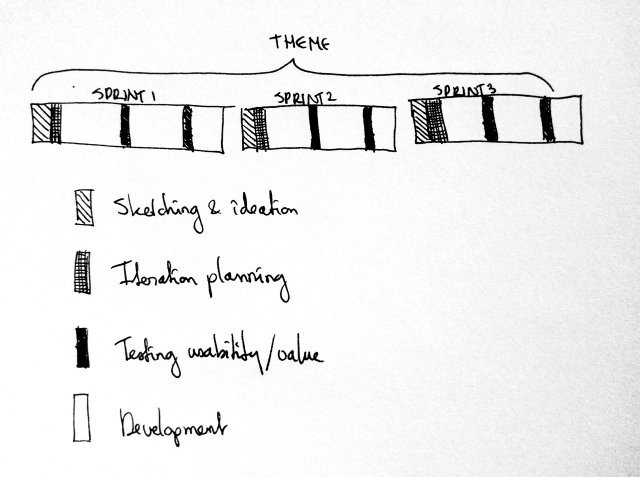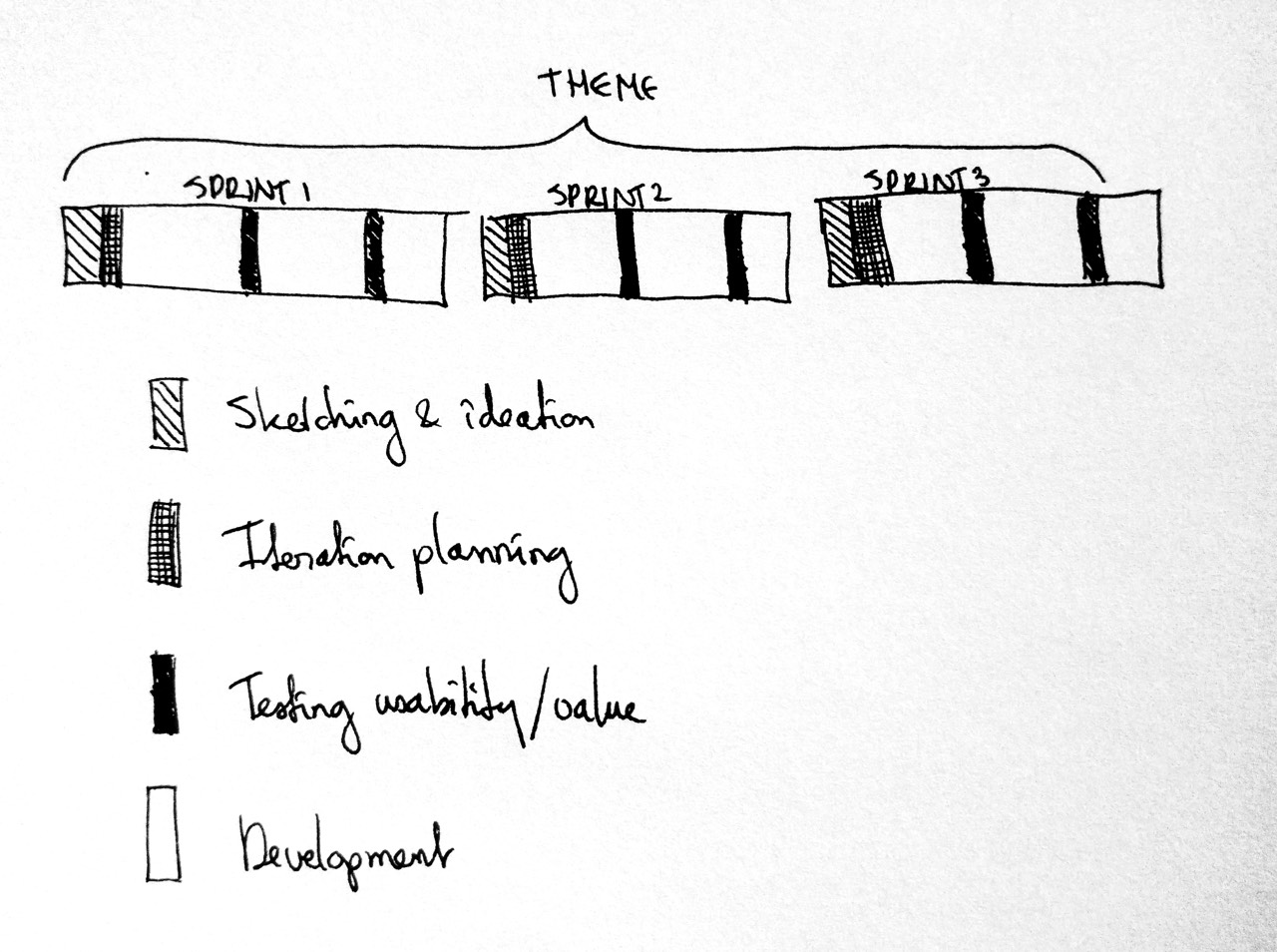A book by Jeff Gothelf, with Josh Seiden

3 Foundations
- Design thinking (User centered design, using design approaches to innovate and solve business problems)
- Agile software development (individuals & interactions, working software, collaboration, responding to change)
- Lean startup method (build, measure, learn)
Principles
- Cross functional teams
- Small, dedicated, colocated
- Progress = outcomes not output
- Problem focussed teams
- Remove waste
- Small batch sizes
- Continuous discovery
- Getting out of the building
- Shared understanding
- Antipattern: Rockstars, Gurus & Ninjas
- Externalising the work
- Making over analysis
- Learning over growth
- Permission to fail
- Getting out of the deliverables business
The Lean UX loop:
- Declare assumptions
- Create an MVP
- Run an experiment
- Feedback & research
- Goto 1
Process
Vision, framing and outcomes
Start with assumptions instead of requirements. Create and test hypotheses:
- Assumptions: what we believe to be true
- Hypotheses: morge granular descriptions of our assumptions that target specific areas of the product or workflow
- Outcomes: the signal we seek from the market to help (in)validate the hypothesis
- Personas: models of the people for whom we believe we are solving a problem
- Features: the changes or improvements we believe will drive the outcomes we seek
Collaborative design
- Everybody gets to design
- Low fidelity artefacts increase collaboration
- Build shared understanding
Techniques:
- Design studio
- Style guides and pattern libraries
- Collaboration for distributed teams
MVP’s & Experiments
- Determine product focus: deliver value or increase learning
- MVP: Do people need it? Will it provide value? Will it be usable?
- Prototype: Who will interact? Learning what? Time available?
- Experiments without prototypes: email, google adwords., landing page, button to nowhere
Feedback and research
- Collaborative research techniques
- Continuous research techniques (3 users every thursday)
- What to test, what results to expect
- Incorporate the customers voice
- A/B testing
- Reconcile contradictory feedback
Lean UX & SCRUM

Making organisational shifts
- Shift from output to outcomes
- From limited roles to collaborative capabilities
- Embrace new skills
- Create cross functional teams
- Crate small teams
- Create open, collaborative workspaces
- Not relying on heroes
- Eliminate big design up front
- Speed over aesthetics
- Value problem solving
- Embrace UX debt
- Shift agency culture
- Work with 3rd party vendors
- Navigate documentation standards
- Being realistic about your environment
- Managing up and out